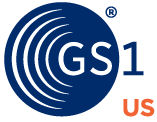GS1 US Barcode Capabilities Test Kits Available to Help Retailers Assess Readiness
EWING, NJ – January 12, 2022 – GS1 US has published a Barcode Capabilities Test Kit to help retailers evaluate their readiness to transition from linear Universal Product Codes (U.P.C.) to data-rich 2D barcodes on product packaging by 2027 – a timeline set by the retail industry in collaboration with GS1 US to equip consumers with more information about the products they buy. The Test Kit assesses a retailer’s capability to scan and process 2D Barcodes at point-of-sale (POS) and support stocking and receiving functions in warehouses and distribution centers as goods move through the supply chain. It is also part of a phased migration plan for implementing 2D barcodes, dubbed “Sunrise 2027 – A New Dimension in Barcodes,” which will guide brands through labeling transition considerations while further ensuring reliability of 2D barcode scanning.
“Global retailers, brands and solution providers have been moving toward the use of 2D barcodes to provide consumers with detailed product information and transparency,” said Carrie Wilkie, senior vice president, standards and technology, GS1 US. “However, there are many other supply chain benefits, including improved inventory management, recall readiness, sustainability, ethical sourcing, product authentication and brand trust. A single 2D barcode conveys limitless information in a machine-readable format and while the transition is a multi-step process, GS1 US will be collaborating with industry to align on capabilities for success.”
“2D barcodes on products will be an important new gateway to digital experiences,” said Kelly Schlafman, director of intelligent packaging, P&G. “We are living in the age of the informed consumer – the explosion of digital access to content is a key element to remain competitive.”
GS1 US recently conducted a Test Kit pilot with three national retailers and their solution providers to assess readiness. The results showed that POS systems must be transformed to process 2D barcodes, interpret new data and maintain efficient checkout. Although retailers in the test group had image scanners installed, testing revealed numerous readiness challenges in successfully scanning, processing and storing data. This indicates that hardware and software infrastructure across all POS formats needs to evolve.
“While the transition to 2D barcodes is still in its infancy, we understand that benefits around sustainability, traceability, supply chain visibility and meeting the needs of consumers are creating a great deal of interest across industry,” said Marcia Mendez, senior program manager, Walmart. “Ultimately, suppliers will likely drive this evolution as they increasingly label their products with 2D barcodes; however, retailers will need to ensure that not only can they scan 2D barcodes, but also read and ingest the data, which we’ve learned are two very different capabilities during the pilot project.”
As a neutral global standards body, GS1 is coordinating this effort to ensure that recommendations and guidance include the needs of all stakeholders to produce a fully interoperable, global solution. GS1 US will continue to work with industry globally to create requirements, conduct testing, analyze results and provide recommendations to optimize 2D barcode placement, read priority and scanning performance in both the dual (U.P.C. + 2D) and single (2D) marking scenarios. This includes testing with the University of Memphis AIDC Lab. Insights will be incorporated into guidance developed for industry globally.
GS1 US, in collaboration with standards development organization Object Management Group (OMG), will feature Sunrise 2027 resources at NRF 2022: Retail’s Big Show, Jan. 16-18, 2022, at booth 4749. This includes GS1 Digital Link, a standard that gives brands the ability to web-enable barcodes, connecting the physical product to the web while providing consumers with instantly updated and brand-authorized content online via a single smartphone scan.
Existing resources to aid industry include a GS1 US Advanced Data Carriers at Point-of-Sale Getting Started Guide as well as implementation support for GS1 Digital Link.
For more information about Sunrise 2027 and the GS1 US Barcode Capabilities Test Kit, visit www.gs1us.org/sunrise2027.
About GS1 US
GS1 US®, a member of GS1 global, is a not-for-profit information standards organization that facilitates industry collaboration to help improve supply chain visibility and efficiency through the use of GS1 Standards, the most widely used supply chain standards system in the world. Nearly 300,000 businesses in 25 industries rely on GS1 US for trading partner collaboration that optimizes their supply chains, drives cost performance and revenue growth, while also enabling regulatory compliance. They achieve these benefits through solutions based on GS1 global unique numbering and identification systems, barcodes, Electronic Product Code (EPC®)-based RFID, data synchronization and electronic information exchange. GS1 US also manages the United Nations Standard Products and Services Code® (UNSPSC®).

